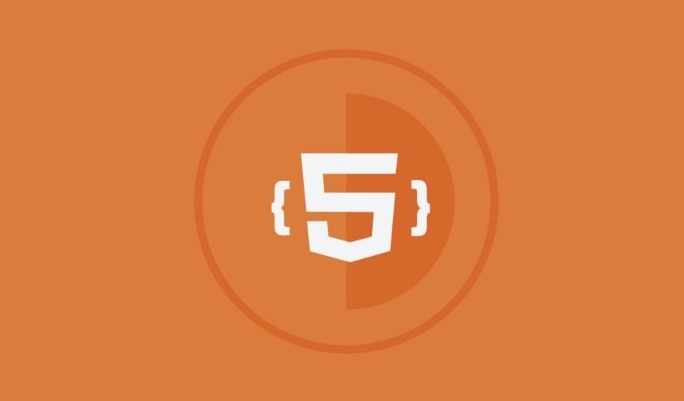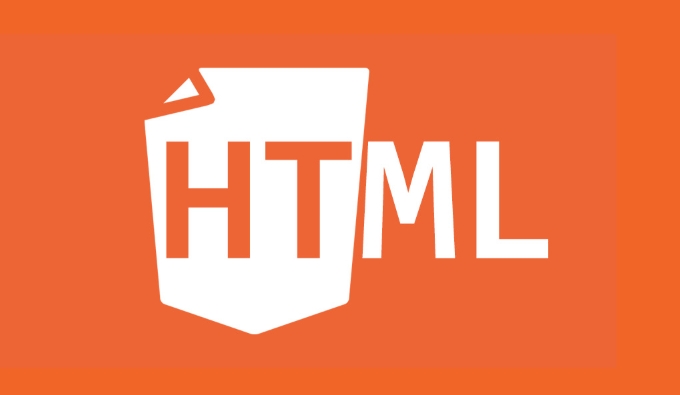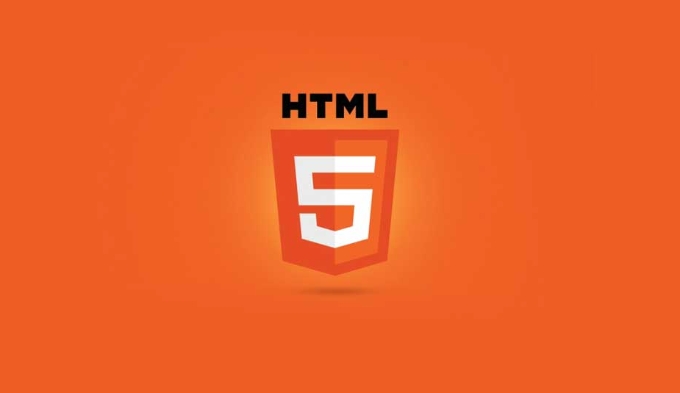 Web Front-end
Web Front-end
 HTML Tutorial
HTML Tutorial
 What is the rel in html attributes and what are its common values like nofollow or noopener?
What is the rel in html attributes and what are its common values like nofollow or noopener?
What is the rel in html attributes and what are its common values like nofollow or noopener?
Jun 29, 2025 am 02:03 AMrel stands for "relationship" in HTML, which describes the relationship between the current document and the linked resource. Common rel values ??are: 1.nofollow, which tells search engines not to track links or pass weights, which are suitable for user-generated content or paid links; 2.noopener, which improves security and prevents new pages from accessing the window.opener attribute, which should be used every time target="_blank" is used; 3.noreferrer, which prevents the sending of HTTP Referer headers, protects user privacy; 4.canonical, which is used in
, which helps search engines identify the main version URL and avoids duplicate content problems. Choosing the right rel value helps SEO, security, and user experience, and can be used in combination, such as nofollow noopener. Correct use of rel attributes is an important part of writing specifications and secure HTML.
When you see rel in HTML attributes, it's short for "relationship" — basically telling the browser or search engines how the current document relates to the linked one. It's most commonly used with <a></a> tags (links), and some of its values ??have important implications for SEO, security, and user experience.

Here's a breakdown of what rel does and when to use common values ??like nofollow , noopener , and others.

What Does rel Do in HTML?
The rel attribute stands for "relationship" and describes the relationship between the current document and the linked resource. You'll usually see it on anchor ( <a></a> ) tags or link elements in the head of a page.
For example:

<a href="https://example.com" rel="nofollow">Visit Example</a>
In this case, rel="nofollow" tells search engines not to follow that link or pass any ranking value through it.
It doesn't change how users interact with the link visually, but it affects behind-the-scenes behavior — especially from search engines and browsers.
Common rel Values ??and When to Use Them
There are several standard rel values. Here are the most useful ones you should know:
1. nofollow
- Tells search engines not to pass authority or trust through the link.
- Often used for user-generated content (like comments) or paid links.
- Helps prevent spam from affecting your site's SEO.
Use it when:
- Linking to untrusted or unknown sites
- Displaying paid or sponsored links
- Showing external comments or forum posts
2. noopener
- Prevents the new page from accessing the
window.openerproperty. - Improves security when using
target="_blank"to open links in a new tab.
Use it every time you open an external link in a new tab:
<a href="https://example.com" target="_blank" rel="noopener">Open in new tab</a>
Without noopener , the new page could potentially control or slow down your original page.
3. noreferrer
- Prevents the browser from sending the HTTP
Refererheader when following the link. - Hides referral info from the destination site.
Note: Using noopener often includes noreferrer behavior by default, depending on the browser.
Use it if you want to protect user privacy or avoid showing where someone came from.
4. canonical
- Used in the
<head>section to tell search engines which version of a URL is the main one. - Helps avoid duplicate content issues.
Use it on pages that have similar or identical content across different URLs (like product pages with sorting options).
How to Choose the Right rel Value
Choosing depends on your goal:
- If you're linking out and don't want to endorse the site, use
nofollow. - If you're opening a new tab, always include
noopener. - If you need to manage SEO signals across similar pages, use
canonicalin the<head>.
Also, sometimes multiple values ??can be combined:
<a href="https://example.com" target="_blank" rel="nofollow noopener">External Link</a>
This way, you block search engine crawling and keep your site secure at the same time.
Final Thoughts
Using the right rel attributes isn't hard, but it makes a real difference in SEO performance and web security. Whether you're trying to prevent spam, protect your site from vulnerabilities, or help search engines understand your structure better, these small additions go a long way.
And honestly, once you get into the habit, it's just part of writing clean, responsible HTML.
The above is the detailed content of What is the rel in html attributes and what are its common values like nofollow or noopener?. For more information, please follow other related articles on the PHP Chinese website!

Hot AI Tools

Undress AI Tool
Undress images for free

Undresser.AI Undress
AI-powered app for creating realistic nude photos

AI Clothes Remover
Online AI tool for removing clothes from photos.

Clothoff.io
AI clothes remover

Video Face Swap
Swap faces in any video effortlessly with our completely free AI face swap tool!

Hot Article

Hot Tools

Notepad++7.3.1
Easy-to-use and free code editor

SublimeText3 Chinese version
Chinese version, very easy to use

Zend Studio 13.0.1
Powerful PHP integrated development environment

Dreamweaver CS6
Visual web development tools

SublimeText3 Mac version
God-level code editing software (SublimeText3)

Hot Topics
 How do I stay up-to-date with the latest HTML standards and best practices?
Jun 20, 2025 am 08:33 AM
How do I stay up-to-date with the latest HTML standards and best practices?
Jun 20, 2025 am 08:33 AM
The key to keep up with HTML standards and best practices is to do it intentionally rather than follow it blindly. First, follow the summary or update logs of official sources such as WHATWG and W3C, understand new tags (such as) and attributes, and use them as references to solve difficult problems; second, subscribe to trusted web development newsletters and blogs, spend 10-15 minutes a week to browse updates, focus on actual use cases rather than just collecting articles; second, use developer tools and linters such as HTMLHint to optimize the code structure through instant feedback; finally, interact with the developer community, share experiences and learn other people's practical skills, so as to continuously improve HTML skills.
 How do I use the element to represent the main content of a document?
Jun 19, 2025 pm 11:09 PM
How do I use the element to represent the main content of a document?
Jun 19, 2025 pm 11:09 PM
The reason for using tags is to improve the semantic structure and accessibility of web pages, make it easier for screen readers and search engines to understand page content, and allow users to quickly jump to core content. Here are the key points: 1. Each page should contain only one element; 2. It should not include content that is repeated across pages (such as sidebars or footers); 3. It can be used in conjunction with ARIA properties to enhance accessibility. Usually located after and before, it is used to wrap unique page content, such as articles, forms or product details, and should be avoided in, or in; to improve accessibility, aria-labeledby or aria-label can be used to clearly identify parts.
 How do I create checkboxes in HTML using the element?
Jun 19, 2025 pm 11:41 PM
How do I create checkboxes in HTML using the element?
Jun 19, 2025 pm 11:41 PM
To create an HTML checkbox, use the type attribute to set the element of the checkbox. 1. The basic structure includes id, name and label tags to ensure that clicking text can switch options; 2. Multiple related check boxes should use the same name but different values, and wrap them with fieldset to improve accessibility; 3. Hide native controls when customizing styles and use CSS to design alternative elements while maintaining the complete functions; 4. Ensure availability, pair labels, support keyboard navigation, and avoid relying on only visual prompts. The above steps can help developers correctly implement checkbox components that have both functional and aesthetics.
 How do I minimize the size of HTML files?
Jun 24, 2025 am 12:53 AM
How do I minimize the size of HTML files?
Jun 24, 2025 am 12:53 AM
To reduce the size of HTML files, you need to clean up redundant code, compress content, and optimize structure. 1. Delete unused tags, comments and extra blanks to reduce volume; 2. Move inline CSS and JavaScript to external files and merge multiple scripts or style blocks; 3. Simplify label syntax without affecting parsing, such as omitting optional closed tags or using short attributes; 4. After cleaning, enable server-side compression technologies such as Gzip or Brotli to further reduce the transmission volume. These steps can significantly improve page loading performance without sacrificing functionality.
 How do I create a basic HTML document?
Jun 19, 2025 pm 11:01 PM
How do I create a basic HTML document?
Jun 19, 2025 pm 11:01 PM
To create a basic HTML document, you first need to understand its basic structure and write code in a standard format. 1. Use the declaration document type at the beginning; 2. Use the tag to wrap the entire content; 3. Include and two main parts in it, which are used to store metadata such as titles, style sheet links, etc., and include user-visible content such as titles, paragraphs, pictures and links; 4. Save the file in .html format and open the viewing effect in the browser; 5. Then you can gradually add more elements to enrich the page content. Follow these steps to quickly build a basic web page.
 How has HTML evolved over time, and what are the key milestones in its history?
Jun 24, 2025 am 12:54 AM
How has HTML evolved over time, and what are the key milestones in its history?
Jun 24, 2025 am 12:54 AM
HTMLhasevolvedsignificantlysinceitscreationtomeetthegrowingdemandsofwebdevelopersandusers.Initiallyasimplemarkuplanguageforsharingdocuments,ithasundergonemajorupdates,includingHTML2.0,whichintroducedforms;HTML3.x,whichaddedvisualenhancementsandlayout
 How do I use the element to represent the footer of a document or section?
Jun 25, 2025 am 12:57 AM
How do I use the element to represent the footer of a document or section?
Jun 25, 2025 am 12:57 AM
It is a semantic tag used in HTML5 to define the bottom of the page or content block, usually including copyright information, contact information or navigation links; it can be placed at the bottom of the page or nested in, etc. tags as the end of the block; when using it, you should pay attention to avoid repeated abuse and irrelevant content.
 How do I embed video in HTML using the element?
Jun 20, 2025 am 10:09 AM
How do I embed video in HTML using the element?
Jun 20, 2025 am 10:09 AM
To embed videos in HTML, use tags and specify the video source and attributes. 1. Use src attributes or elements to define the video path and format; 2. Add basic attributes such as controls, width, height; 3. To be compatible with different browsers, you can list MP4, WebM, Ogg and other formats; 4. Use controls, autoplay, muted, loop, preload and other attributes to control the playback behavior; 5. Use CSS to realize responsive layout to ensure that it is adapted to different screens. Correct combination of structure and attributes can ensure good display and functional support of the video.





